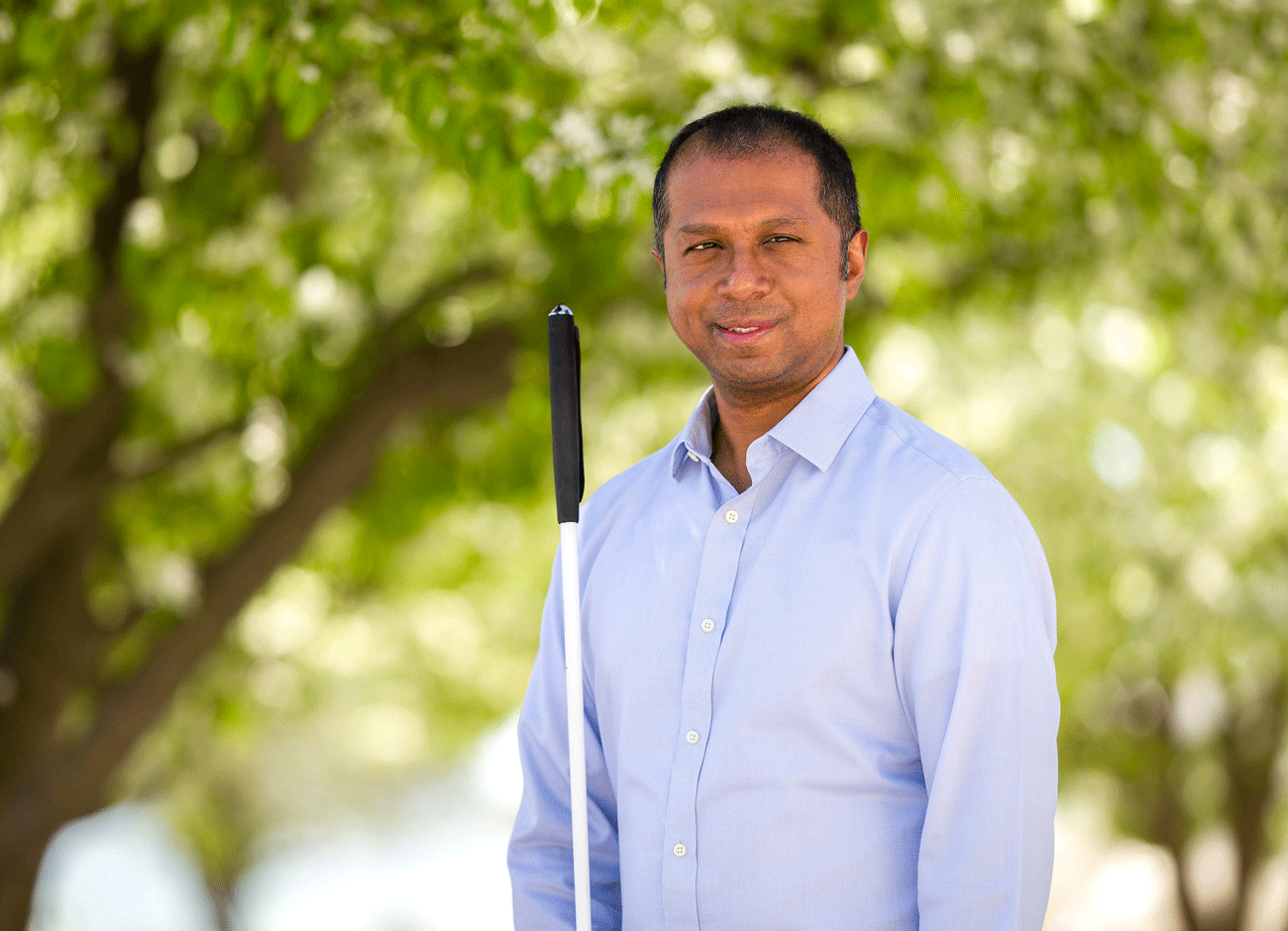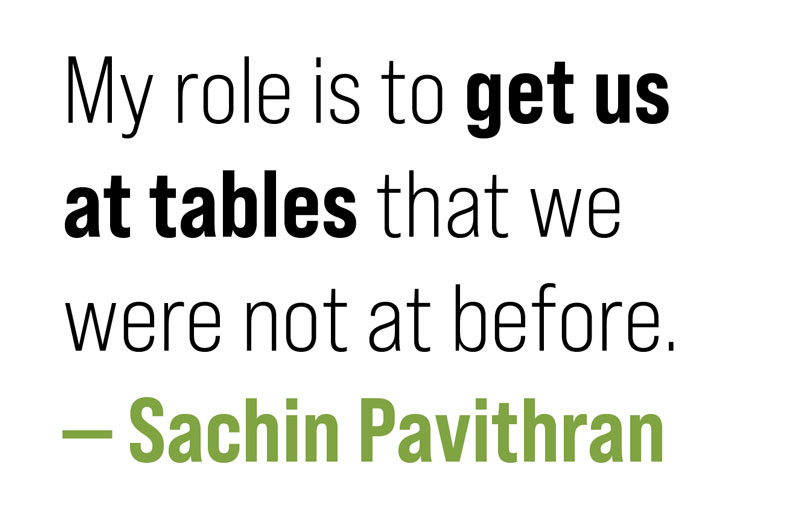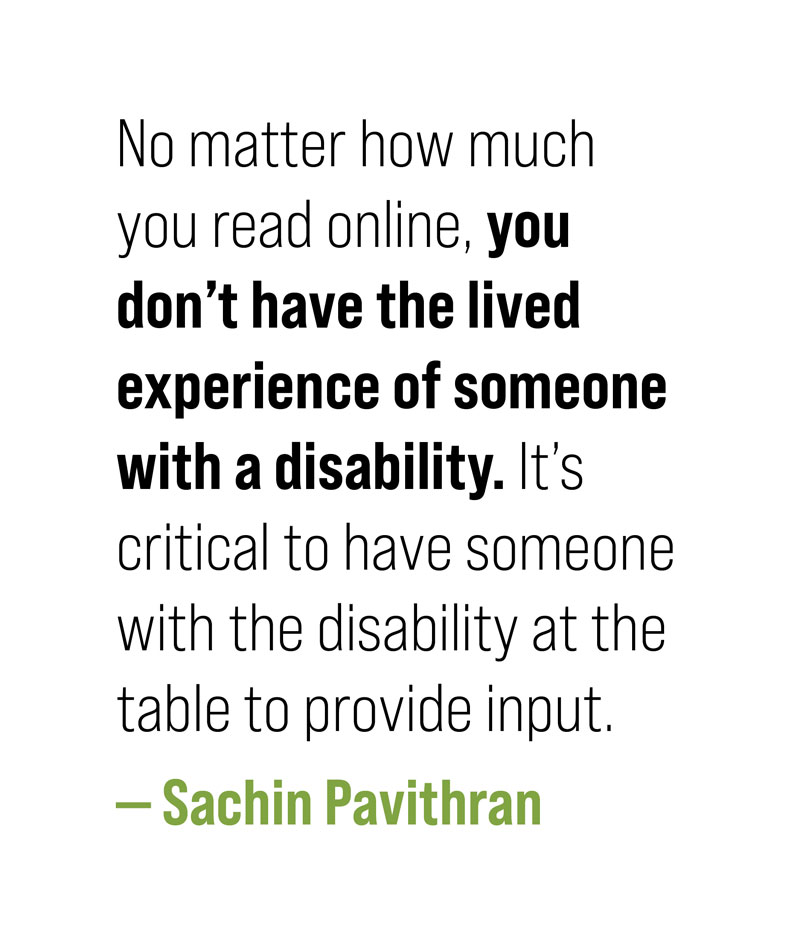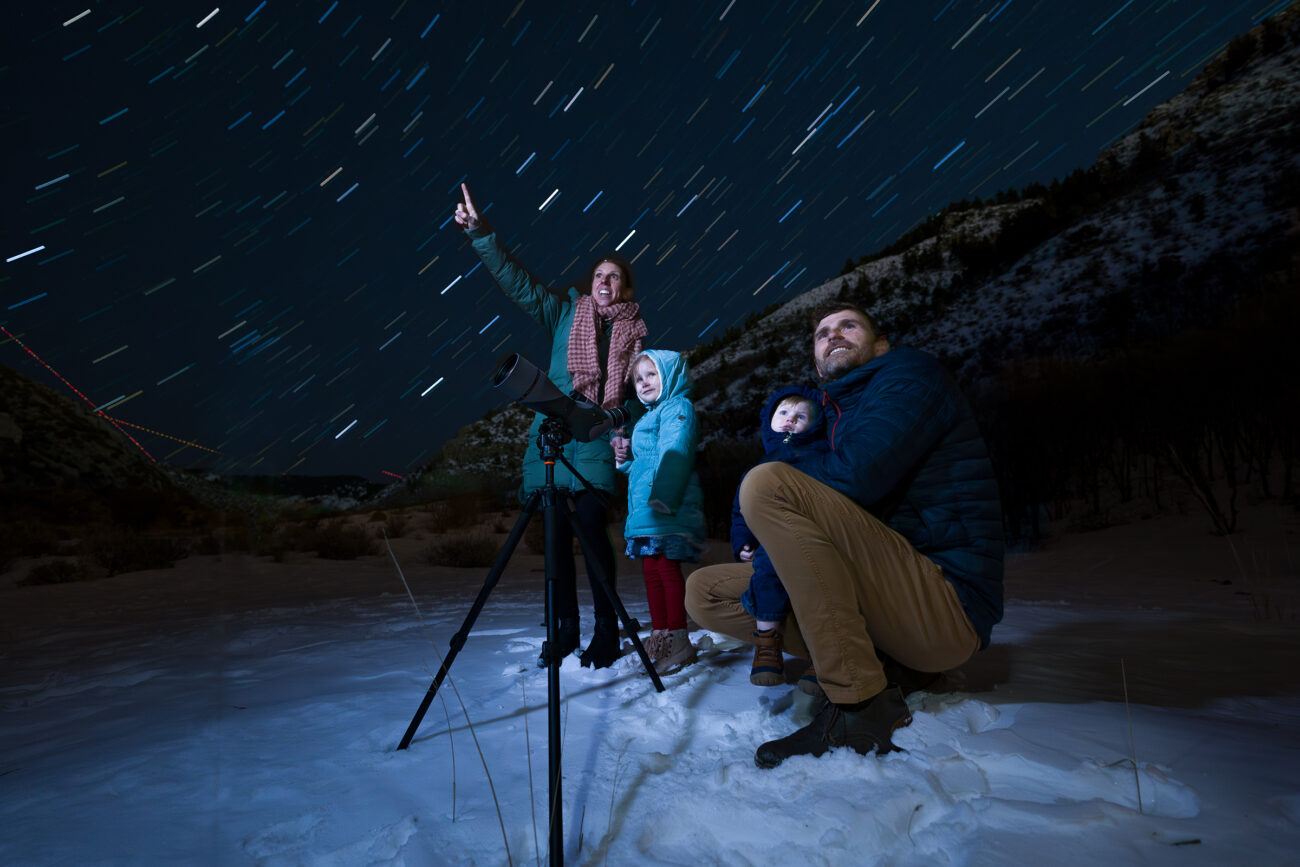Beyond the Bare Minimum: A Vision for Inclusive Design

Sachin Pavithran knows he is fortunate.
Growing up in Dubai, Pavithran, Ph.D, ‘12, did not know anyone else with a disability or have services now considered mainstream for blind children. And yet he thrived.
“The reason I was able to finish my K-12 education is because my mom read all my textbooks to me,” Pavithran says. “My parents were basically supportive of anything and everything I wanted to do. They didn’t just let me sit around because of my disability and not take things into my own hands.”
They fostered his independence. He took up activities like jet skiing and wakeboarding in the Arabian Sea. When Pavithran applied to college in the United States, his parents suggested he attend the University of Pennsylvania and live with an uncle who could watch over him. Pavithran enrolled at Utah State University instead.

“When I came to college, it was a night and day difference from going from nothing, where the only support I had was my mom, to having all these options at the disability service office,” he says. “I think the relations I built at Utah state helped me go into the path I went into.”
Pavithran has spent the last 20 years addressing accessibility issues in technology. He is the former policy director for USU’s Institute for Disability Research, Policy & Practice and director of the Utah Assistive Technology Program and has served on the U.S. Elections Assistance Commission’s Board of Advisors and chaired the National Federation of the Blind’s Committee on Autonomous Vehicles and Innovations in Transportation. But Pavithran didn’t come to Utah State planning on a career in advocacy.
“My degree was in information systems,” he laughs. “I wanted to get into the tech industry with some well-known tech giants and make a lot of money.”
But his exposure to the work of the National Federation of the Blind pointed him down a different path—one where people with disabilities were elevated to leadership positions and had real power to affect change. Pavithran stepped down from his post in early 2021 to lead the U.S. Access Board—a federal agency tasked with developing accessibility guidelines and standards that promote equality for persons with disabilities. Pavithran may not have the bank account of a tech executive, but he can shape inclusive practices across platforms and communities. And that is fortunate for us all.
What follows is a conversation with Pavithran about designing inclusive spaces online, in higher education, and beyond.
Kristen Munson: In the past when discussing accessibility, the design solution was often something like including a ramp on a building. But the spaces we navigate today are increasingly online. What do inclusive environments include?
Sachin Pavithran: There have been significant improvements to the design of the built environment because of what is required by law. However, there are guidelines on accessible building codes and then there is the usability aspect. When architects look at these, are they just looking at things that need to be done rather than the functionality of the environment? For instance, when building an auditorium, can a wheelchair user sit with their friends or in the front rather than the nosebleed section? Are you designing spaces in a way so that there is flexibility? When I go into a place like the Kennedy Center for a show, it’s a whole different experience having someone sitting next to me whisper what is going on versus having a headphone and a professional describe it. Guidelines set the bare minimum you need, but you can’t legislate good design. You can regulate standards, but the inclusive way of building something, the inclusive way of designing spaces, comes down to when architects, designers, or event planners really understand market needs for a community that often doesn’t get thought about.
KM: Inclusion is a word that seems to be a word popping up more and more. How do you define it?
SP: Let me give you an example. If I visit a place like the Vivint Smart Home Arena, the only way I can navigate it is by someone’s assistance. An inclusive space would be I get to the building and have access to information, whether by something like indoor wayfinding technology, and it tells me the way to the ticket counter and to my seat. What if I want a drink or go to the restroom? An inclusive space is I don’t even have to think about it when I get there. I don’t have to worry if I able to do this on my own.
KM: Have you ever visited a place like that?
SP: No! But things are improving.
KM: What does inclusion look like in online spaces?
Because of COVID-19 we have been doing a lot in virtual spaces over the last year. What are we doing to ensure that the tools we use to make it feel inclusive? If I join a meeting or a conference, are the opportunities for interaction inclusive of someone who is blind? Can I participate in the same way that others will? Do not assume that American Sign Language is all you need for everyone who is hard of hearing. If you have ASL, are you making sure that the sign language interpreter is positioned so that people can see them? It’s one thing to have an accessible tool, the implementation is a different thing.

KM: It sounds like people with disabilities need to be in the room when design decisions are being made to build inclusion into plans from the beginning rather than as an afterthought.
SP: One of the biggest problems that we face around this conversation is the work is often done without the input of the community impacted by it. No matter how much you read online, you don’t have the lived experience of someone with a disability. It’s critical to have someone with the disability at the table to provide input. Better yet, hire someone with a disability who has the background, the skillset, or the relationship with the community to guide the work. And speak up if you are the room and notice who is absent. We need people without disabilities to be allies who can say, hey, we need someone on the team from the disability community. If you really mean to do something good, well, put the money where it counts.
KM: Are there areas you are hopeful about?
SP: Transportation is often a big barrier for people with disabilities. Autonomous vehicles (AVs), if designed right, could be a significant breakthrough. That changes the landscape for people with disabilities on where they can live. Right now, I have to think about transportation options. The condo I am buying in Virginia, it is in a nice location near the Metro, but I would have preferred to live somewhere a little further away and have a house with a yard. AVs change the dialogue completely. And the way they are talking about the concept of AVs around rideshare and public transit increases the independence of people with disabilities to be able to live where they want and work where they want. It’s hard to tell what the end result will be, but this is the most engaged people with disabilities have been at the design phase than other groundbreaking technologies.
Has COVID-19 shifted the virtual work landscape to a more level playing ground for people with disabilities?
One of the challenges for people with disabilities in choosing jobs is where the job is located. Even if it’s the perfect opportunity across the country, a person with disabilities has to upend their local support system. Remote work enables them to do something and not give up everything they have. For many years we have advocated for the whole concept of telework and remote working and it was always denied or not even considered until COVID-19 hit. And then everyone is doing remote work, and guess what? Everyone is loving remote work. All of sudden it’s this cool thing and people are wondering why didn’t we think of this before? Well, we’ve been advocating this for 30 years! We did a survey at the agency I’m running and found that 80% of my staff want to work remotely. They are being productive, they feel their mental health is better, they don’t have to be stuck in traffic for an hour each way. Remote work is welcomed now and that changes what the possibilities are. That doesn’t get rid of the stigma that employers have about what people with disabilities, but it is does limit it a little bit.
A quarter of American adults has a disability. Why have we continued to fail for so long in these areas?
Because the generation of managers that have been making the decisions has a mindset of what a successful work environment looks like based on the mentality of the old assembly line—you’re only productive if you are standing at the desk and I can see you staring at the monitor. You can be equally unproductive and fake it sitting at your desk. It’s a mindset they have because back in the day a lot of the jobs were kind of that standing on the assembly line work. The concept got transferred into all these different workspaces where the hours have got to be 8 to 5 and there is no flexibility. Only when they were forced by COVID-19 to make a different choice were they were able to see remote work is possible.
Are there specific things you want to accomplish at the U.S. Access Board?
We are what we call a standard-setting agency. I want us to be more proactive than just doing what we have been asked to do by statute. I am trying to push hard on our outreach and how visible we are. We are known in certain communities like architects, but we are not well known in others, especially underserved communities. I recently did a presentation for the national tribal leaders who were completely unaware of our existence despite there being is a lot of need there. My role is to get us at tables that we were not at before. Our agency has done a pretty good job at the built environment, but the digital divide still exists. Instead of talking just basic web accessibility, I want to see us go much further than website design.
Any last thoughts?
There is still dialogue that needs to happen in higher education on what inclusivity looks like in accessible instructional experience. It’s not rocket science. It’s making it a priority and making it happen. I think we have the resources and the knowledge and best practices out there. The higher ed community needs to take ownership of it. The higher ed community also has a way to go to make people with disabilities feel like they belong. Right now, the only association they generally have on college campuses is with the disability office. They are left out of a lot of the other activities that happen on a campus. How can that community feel more like they belong with the student body at large rather than something that they do in their small corner?







Jeff Redding August 8, 2021
I hope Sachin Pavithran will listen to those of us who are Pedestrians.
– Blinded Veteran /Disability Rights Advocate
http://www.pedestriansmatter.org